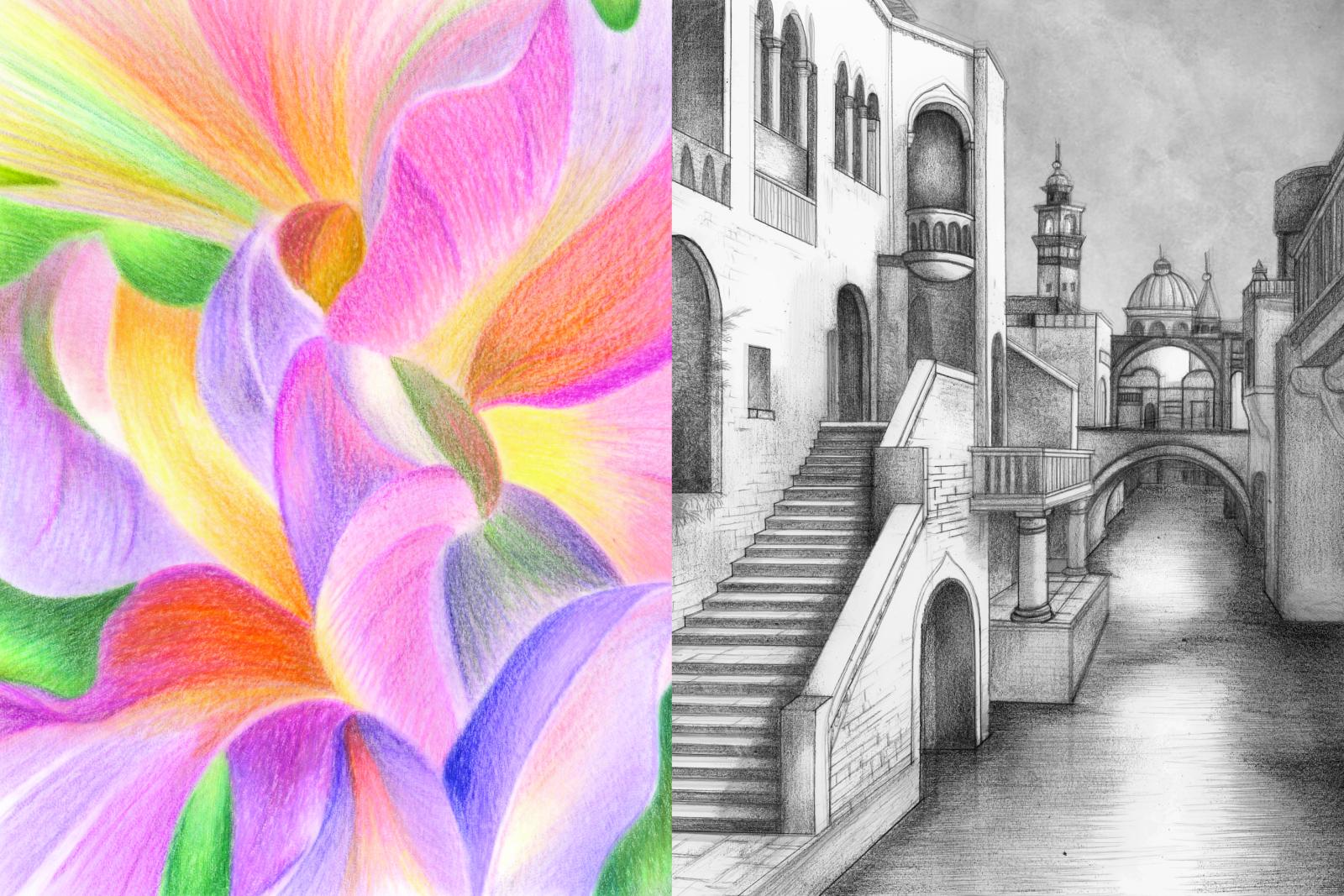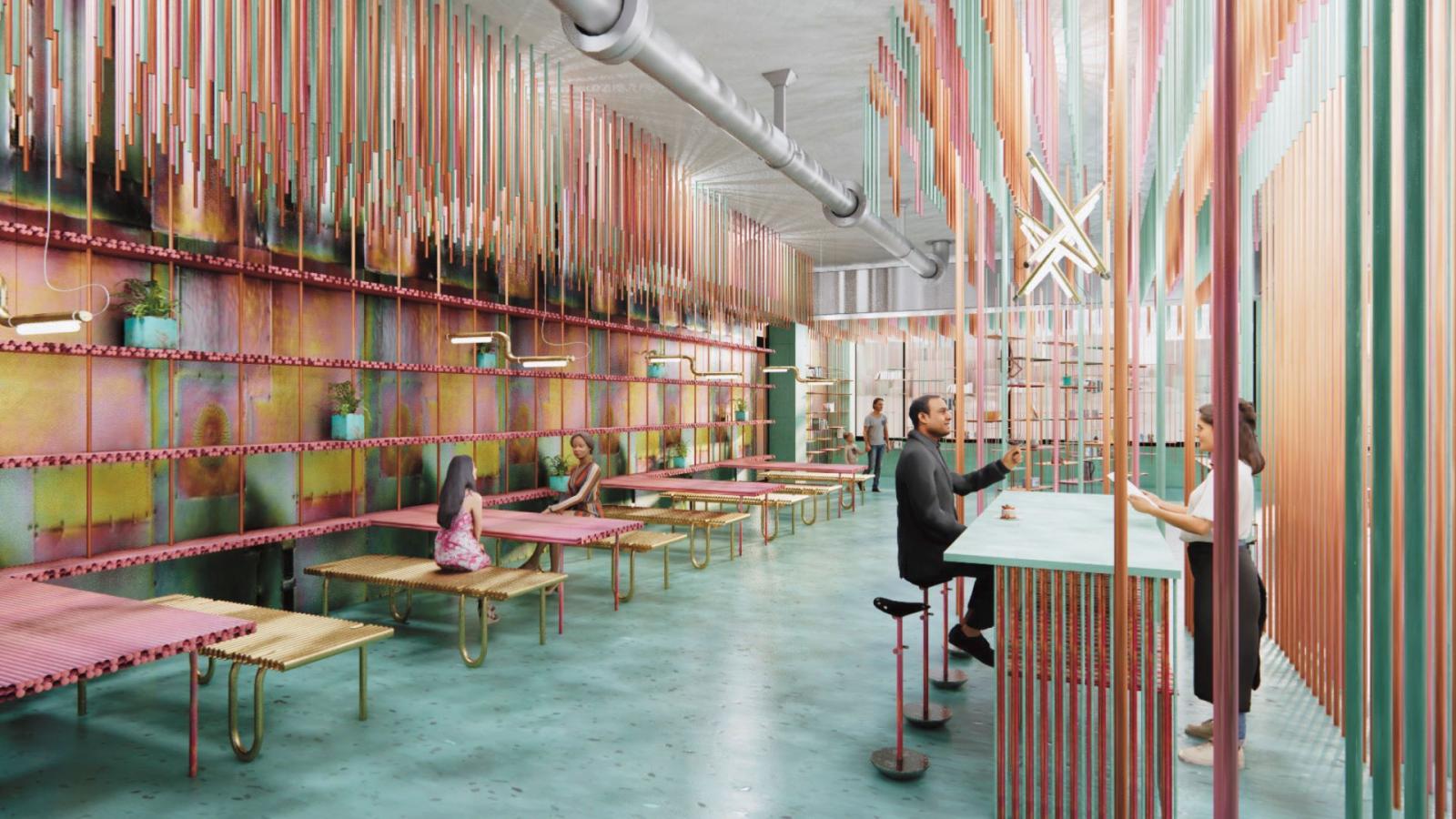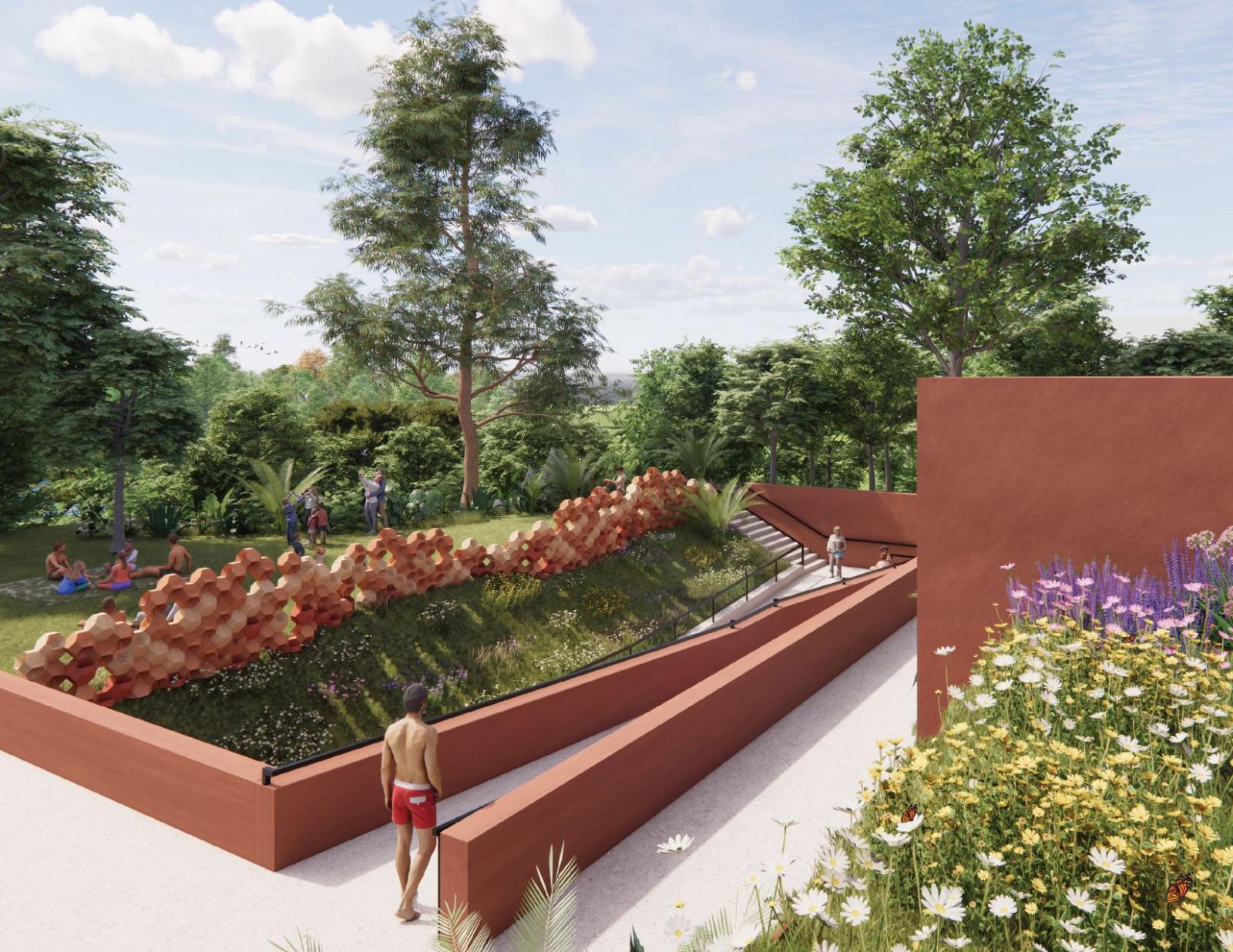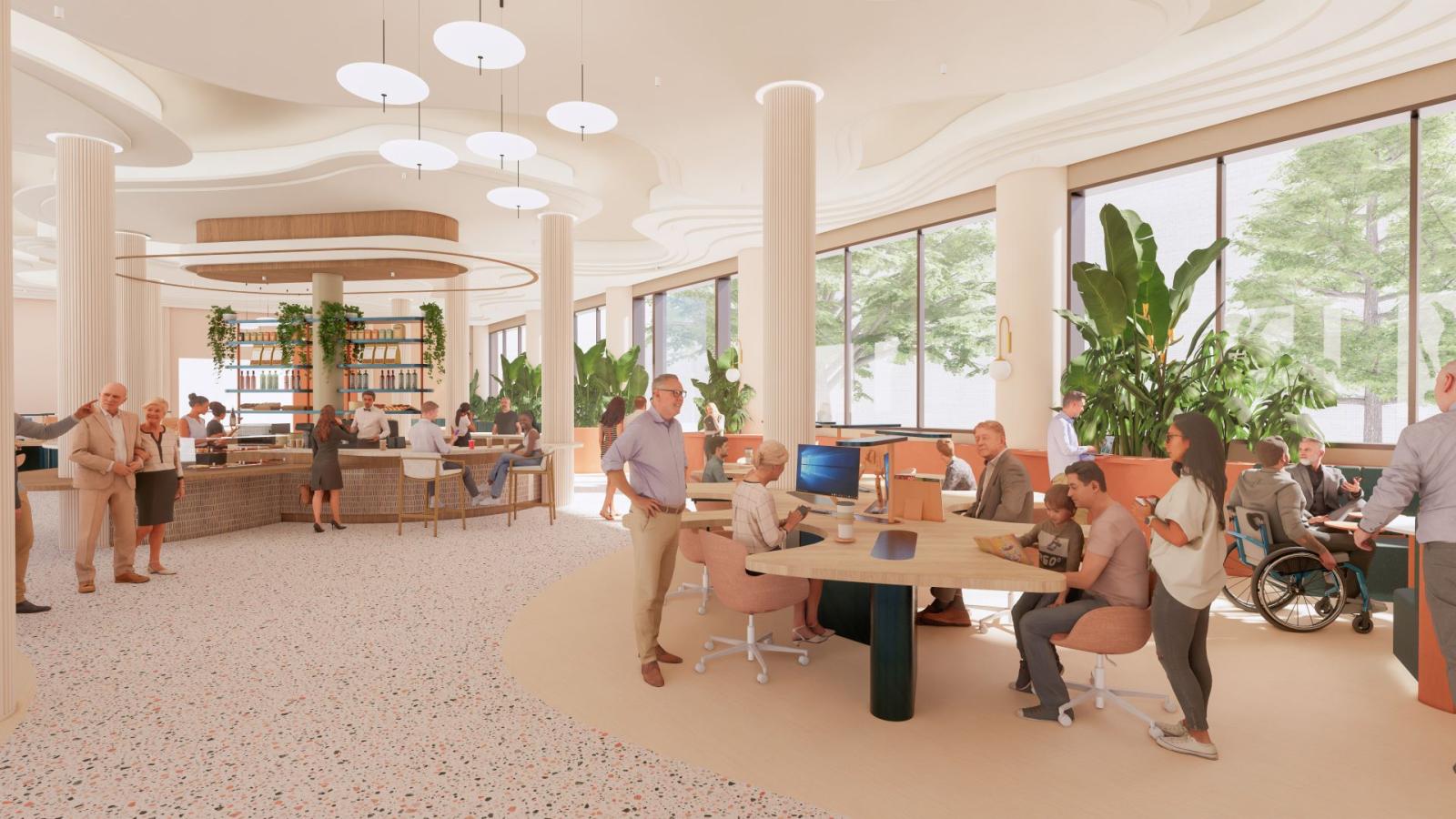Interior Design Students Receive Metropolis Magazine Future 100
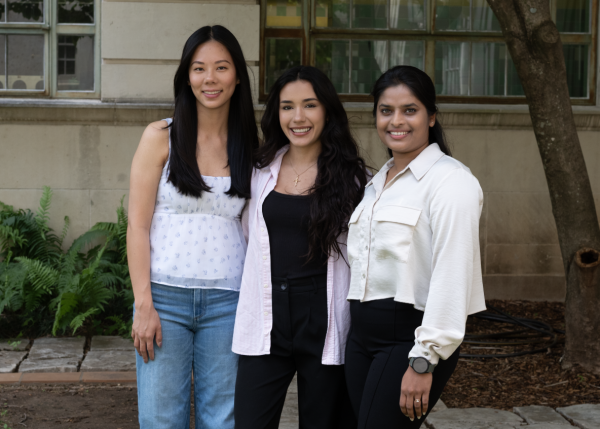
For the fifth consecutive year, UT Austin interior design students have been recognized with the Metropolis Magazine Future100 designation. Congratulations to Winnie Lin (MID I), Ashley Sparks (BSID), and Nandita Warrier (MID II)! This prestigious award honors the top 100 graduating architecture and design students in North America, jump-starting their careers as Metropolis actively shares the selections with recruiters across the country.
To learn more about this year’s winners, we asked them a few questions about their interests and time at UTSOA.
WINNIE LIN
What drew you to pursuing interior design?
Coming from a background in graphic design, I was always interested in how visuals could communicate stories within brands. With interior design, it became more—it was a way to translate that visual storytelling into spatial experiences. I’ve always been fascinated by how spaces can evoke emotion, foster connection, and leave lasting impressions on people. Pursuing interior design was a way for me to merge the two professions. Together, they create powerful stories and experiences for its users.
What were some of your favorite classes or most memorable experiences over the course of your time at the School of Architecture?
One of my favorite classes was Advanced Drawing with John Blood, which challenged me to think differently about architectural drawing as a tool for creating compelling narratives. I also really enjoyed Construction II with Allison Gaskins—not for the technical knowledge, but because we got to do a tile workshop and a textile workshop that introduced a hands-on, material-focused approach to learning. Last but not least, a recent memorable experience was going on my first studio trip to Granada, Spain, to see the Alhambra as part of an Advanced Studio in my final semester, led by Paul McCoy.
What are your plans post-graduation?
After graduation, I’ll be relocating to Utah to join the Salt Lake City HKS office, where I’ll be focusing on designing immersive, experiential interiors.
ASHLEY MARIE SPARKS
What drew you to pursuing interior design?
I decided to pursue interior design while transferring out of psychology as an undergraduate, craving something more creative. I was attracted to the practice's balance of creativity and technicality because it combined my personal strengths and interests. I appreciate design's power to affect behavior and emotion, and the ability to transform ordinary spaces into memorable experiences. It was wonderful to see how much psychology is within interior design- how the scale of a room, the hue of light, or the feeling of material can work in tandem to evoke a feeling. I admire the complexity and nuance of crafting movement, emotion, and social interactions within the built world. I love the challenge of creating a narrative and bringing it to life through the articulation of space, centering design always around the future inhabitants. Design is an art that requires problem-solving, intuition, and a keen understanding of human behavior to discover the best solutions and develop environments that leave a positive impression, making everyday moments feel thoughtful and intentional.
What were some of your favorite classes or most memorable experiences over the course of your time at the School of Architecture?
One of my most memorable experiences at UTSOA was traveling to Madrid, Spain, with Andy Bako’s advanced studio during my final semester. It was my first time in Europe, and I remain incredibly grateful to explore design in a global context. Plus, navigating a new city in a foreign city brought my classmates and I much closer. From visiting world-class museums to studying Madrid’s rich architectural and political history, every day was exciting.
What are your plans post-graduation?
After graduation, I plan to travel across Europe, immersing myself in different cultures and appreciating the architectural styles from diverse environments. After returning, I hope to pursue a career in interior design in Texas, where I can continue professional growth, take on new creative challenges, and shape spaces that are both functional and meaningful.
NANDITA WARRIER
What drew you to pursuing interior design?
My background in architecture, and especially my professional experience in India is what first introduced me to the world of interiors. I found myself captivated by the small details; the interplay of color, texture, materiality, and how these choices subtly shape how people feel and interact within a space. The part that excites me most is when architecture and interior design meet in perfect sync to create cohesive, immersive experiences and I’ve come to believe that thoughtfully curated interiors can go far beyond aesthetics. They have the power to evoke emotion, engage the senses, and foster empathy. That emotional and human-centered potential is what keeps drawing me deeper into the field.
What were some of your favorite classes or most memorable experiences over the course of your time at the School of Architecture?
One of my favorite experiences was the Multispecies Studio with Prof. Nerea Feliz. It challenged me to move beyond anthropocentric design approach and consider how our built environments can include and even celebrate non-human species. Designing a public pool that integrated habitats and created moments of engagement between people and local wildlife was both eye-opening and rewarding. It pushed me to consider empathy on a broader ecological scale. Beyond that, it’s been a truly enriching experience to learn under such inspiring professors throughout the program. Their guidance, along with the collaborative and supportive studio environment, has shaped not just my work, but also how I approach design as a whole.
What are your plans post-graduation?
After graduation, ideally I am looking for an opportunity where I can bring together my background in architecture, and interiors. I’m also hoping to travel, engage with different cultures and explore new design sensibilities that can expand my creative perspective.
